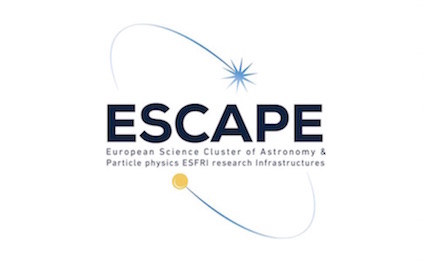ESCAPE – European Science Cluster of Astronomy Particle Physics ESFRI RIs

ESCAPE aims to address the Open Science challenges shared by ESFRI facilities (CTA, ELT, EST, FAIR, HL-LHC, KM3NeT, SKA) as well as other pan-European research infrastructures (CERN, ESO, JIV-ERIC, EGO-Virgo) in astronomy and particle physics research domains.
The project aims at delivering solutions to ensure integration of data, tools, services and scientific software. These actions will establish interoperability within EOSC as an integrated multi-probe facility for fundamental science.
Multi-messenger astronomy and accelerator-driven particle physics are two pillars of the ESCAPE project. Through the combination of the experimental investigations of the two extremes, from the largest-scale structures in the observable Universe to the most fundamental particles, the astronomy-related projects and the accelerator-based particle physics facilities will open together new paths towards the understanding of the Universe. A deluge of data is expected in the next years by the next generation facilities prioritised in the ESFRI – European Strategy Forum on Research Infrastructures, and other world-class projects. This €16 million funding boost will help Europe’s world-leading research infrastructures work together to find common solutions to their data challenges, their data interoperability, their data access and to accentuate the openness of Fundamental Science research to the full international community, from professionals to the public.
ESCAPE will extend the concepts of the astronomical Virtual Observatory seamlessly into the domains of solar physics, particle physics and astroparticle physics. ESCAPE will leverage the long-standing expertise of the particle physics community in large-scale distributed computing and data resources, building new tools to deal with the data avalanche from the next generation of facilities to create a giant “data lake” of up to multi-Exabytes federating national and regional data centres. A new science analysis platform will be built, so users of the EOSC can tap into existing software and bring their own, using the power of high- performance and high-throughput computing. Finally, ESCAPE will create a new open source software repository, to maximise software re-use and co-development, to identify open standards for software release, to investigate data mining tools and new analysis techniques. The ESCAPE domain-based repository will be part of the global EOSC catalogue of scientific software.